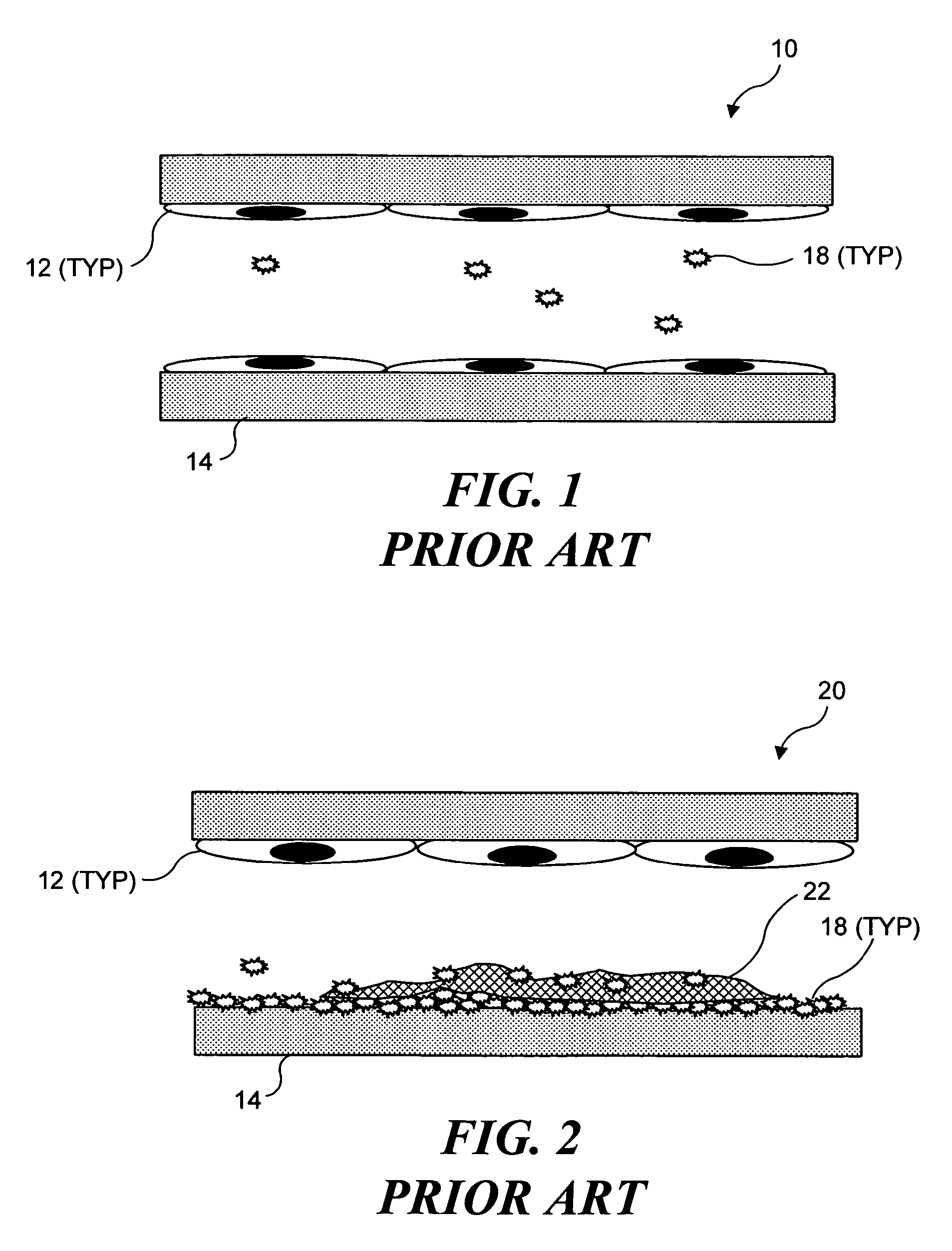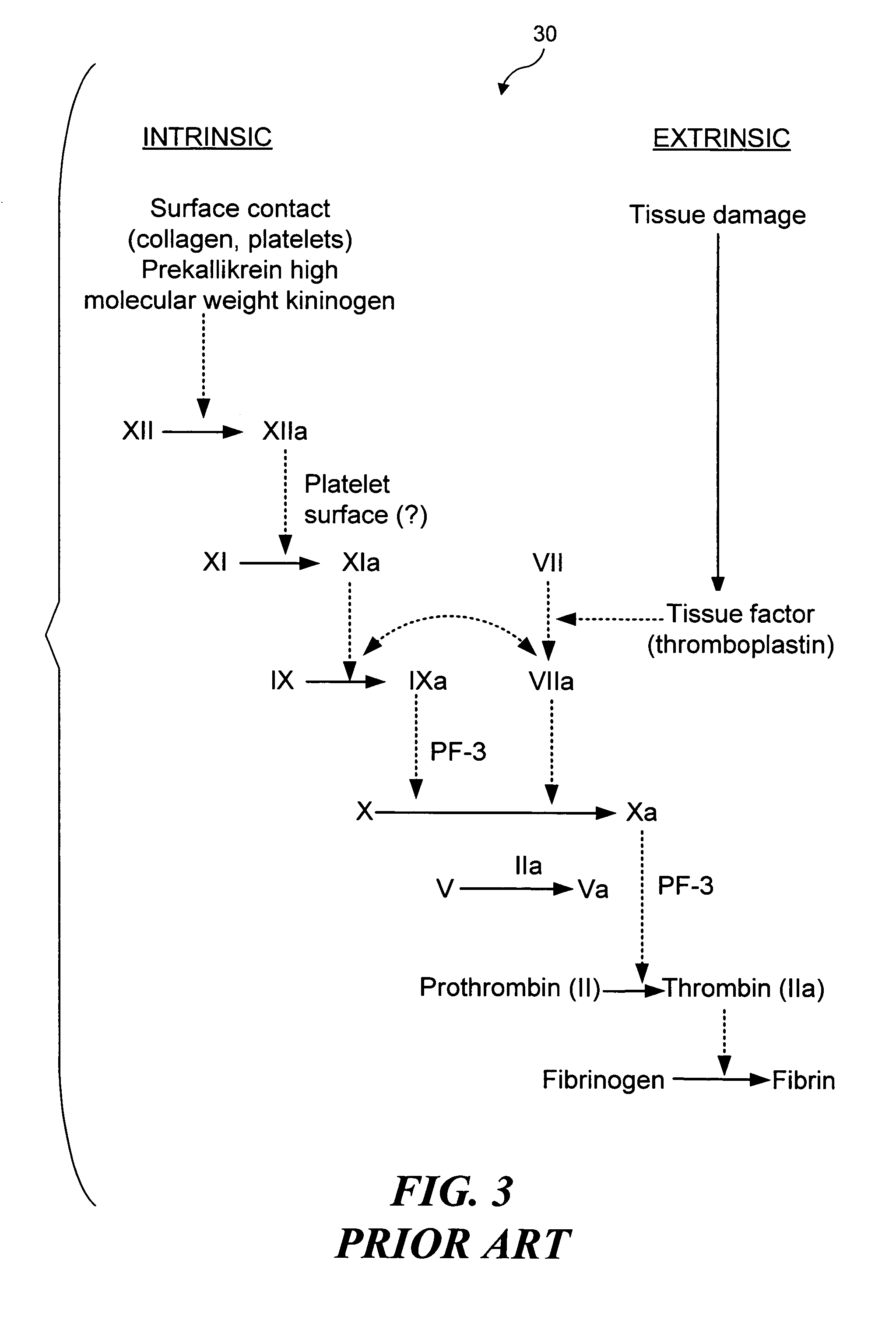Ultrasound target vessel occlusion using microbubbles
a technology of ultrasonic target vessels and microbubbles, which is applied in the field of selective occlusion of blood flow in the vessel, can solve the problems of mechanical damage to the endothelial cells, the damage of the endothelial tissue contacted by the expandable member, and the insufficient size of the fibrin clot to achieve a meaningful occlusion of the blood vessel, etc., and achieve the effect of expanding the original fibrin clo
- Summary
- Abstract
- Description
- Claims
- Application Information
AI Technical Summary
Benefits of technology
Problems solved by technology
Method used
Image
Examples
Embodiment Construction
Overview of the Present Invention
[0033]As noted above, the present invention can be used to selectively occlude a blood vessel by selectively damaging endothelial cells in a portion of a blood vessel where an occlusion is desired. The damage to the endothelial cells exposes underlying tissue, which releases enzymes causing naturally occurring fibrinogen to polymerize, thereby depositing a fibrin clot along the vessel wall. Additional fibrinogen is introduced into the blood vessel. The additional fibrinogen is similarly converted to fibrin, enlarging the clot. An advantage of the present invention is that because the thrombus is formed on the underlying tissue where damage was caused to the endothelial tissue, the clot that is produced cannot readily break loose from that site and cause undesirable problems in other parts of the body, e.g., by occluding a blood vessel in a patient's brain. While a number of different techniques can be used to selectively damage the endothelial cells,...
PUM
| Property | Measurement | Unit |
|---|---|---|
| temperatures | aaaaa | aaaaa |
| length | aaaaa | aaaaa |
| diameter | aaaaa | aaaaa |
Abstract
Description
Claims
Application Information
 Login to View More
Login to View More - R&D
- Intellectual Property
- Life Sciences
- Materials
- Tech Scout
- Unparalleled Data Quality
- Higher Quality Content
- 60% Fewer Hallucinations
Browse by: Latest US Patents, China's latest patents, Technical Efficacy Thesaurus, Application Domain, Technology Topic, Popular Technical Reports.
© 2025 PatSnap. All rights reserved.Legal|Privacy policy|Modern Slavery Act Transparency Statement|Sitemap|About US| Contact US: help@patsnap.com



